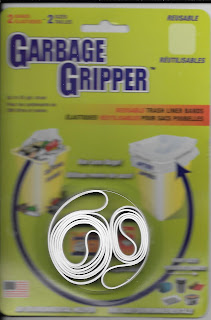Shock Cords and Other Delights!
The Thrifty Rocketeer blog continues....
This weekend, I scored a couple of victories.
Not only was the weather perfect.... into the mid-70s with low humidity and no clouds, but there was a low turn-out at our club launch. (It seems a lot of people decided to go "Dancin' in the Streets" as Martha Reeves used to sing.
Anyway, the point is the leaves were almost all off the trees, and I got a chance to walk off into the woods at the end of our launch field. The silver rocket that Joel had lost and left in the tallest tree appeared to have vanished. So I headed for it, easily spotted in the woods as the one oak that still had its brown leaves. It served as a point to navigate to and could be spotted from pretty much anywhere else in the mostly balding trees in this copse.
As I descended the steep slope and approached it, I kept looking up and scanning around to see if I could spot a clue to its location.
Sure enough, as I approached the small trickle that marked the bottom of the creek that had carved this ravine...I spotted it. A shaft of such bright silver, it looked to be an aluminum bar laying across the creek, but not in the water.
I made my way gingerly toward it as my pulse quickened. Yep, it had two launch lugs and looked like there was a fin missing. (All of them, actually.) I was thrilled to have found the body tube of his rocket which had been dangling in that tree top for only the last month. But there was no nosecone, no parachute. I recalled seeing a blue checked parachute as part of the rocket dangling 50 to 75 feet over the forest woods at last launch.
I started to look further, assuming that when the shock cord snapped, the chute and nosecone either got snagged again, or floated downwind in the (high) wind that had freed it. The land sloped much more gently here, and I looked farther afield. Then I spotted it.
A red plastic bag was poking up out of the leaves, drawing me near. As I got close, I realized it was a red checked parachute, and picked it up, shaking the leaves off it, and revealing a brilliant red nosecone underneath it.
Stunned, I stared at it, looking for some marking or indication of what it was. I could have sworn that chute was blue checked. But I was happy to have found it. The more I looked at it, the more I thought the brilliant paint job looked familiar, right down to the splotch of baby blue paint on the inside shoulder of the plastic nosecone. Could it be?
I started scanning around and reasoned if it had fallen from the tree, the fins may be nearby, so I started looking for black fins among the leaves...and then I spotted it, about 15 feet further down wind... black fins and something red sticking up out of the bed of leaves. I walked over and picked up the red rocket with black fins.
It was my own missing rocket that had been in the trees for almost 6 months. It WAS my nosecone and chute and here was the undamaged body, waiting for me. I was thrilled.
I circled back, reasoning that the other nosecone and chute must be in the area, but I never found it.
Upon closer examination, I realized both shock cords and snapped right were the rubber strap had exited the throat of the rocket body tube. And the nosecone also had a short stub where one had been knotted against the plastic.
So I was left with a puzzle or two:
- Where was the missing nosecone and blue checked chute.
- Why had the rubber shock cords snapped
- How could they be replaced
- Would Kevlar be a better choice
- And how could Kevlar be added to the mix, considering the rocket was already built?
When I got to the check out scanner, I was a little shocked to see how much this pair of rubber bands rang up... but when checking on it at another store, I found a SINGLE rubber band ran $2.99 so my pair for $3.99 may be pricy for the raw materials, but at least I had a couple of options and a supply.... one for both rockets.




I finally realized the advantage of rubber cords when my Mercury Redstone got caught on a telephone line. It was hanging just low enough for me to attempt retrieving it with my telescoping pole. I caught hold of the airframe with the pole but could not lift it over the line, so the only thing I could do was pull the airframe down toward me in hopes the nose cone would flip over the line and come down. The nose cone hung on the line and would not flip over, so I had no choice but to yank the airframe in hopes of breaking the shock cord. The cord snapped and the airframe landed in the grass and fortunately, the nose cone and parachute broke free of the power line and floated down a few feet away.
ReplyDeleteBraided elastic shock cords *might* last longer than rubber but had I put one on that rocket it would still be stuck on that line. I made a point of replacing the cord with elastic but tying on a short piece of rubber between it and the nose cone for next time (and there will always be a next time).
Excellent comment, Lonnie. Thank you for sharing!
ReplyDelete